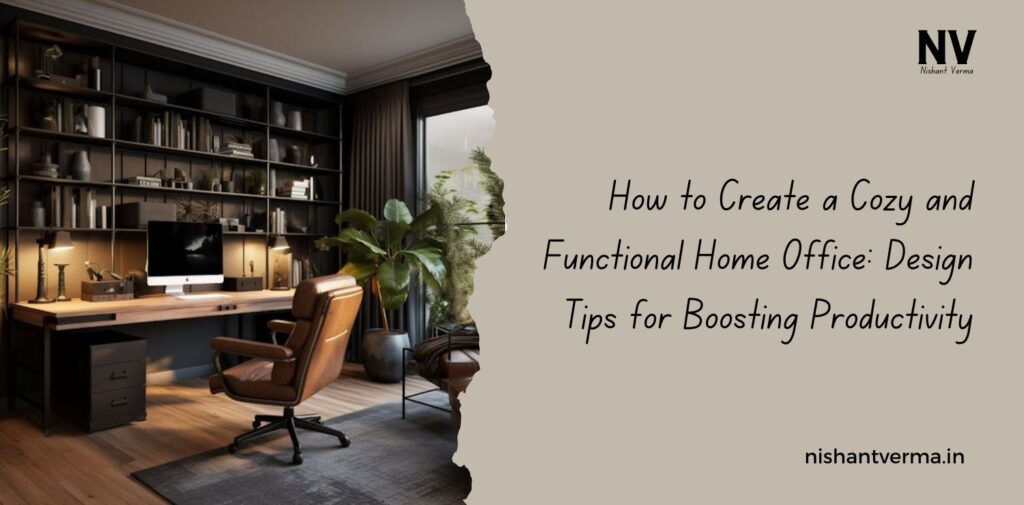In today’s fast-paced world, working from home has become a common trend. Whether you’re a remote employee, a freelancer, or someone running your own business, having a home office that’s both cosy and functional is key to being productive and comfortable. But creating an office space that balances comfort with efficiency can be a bit tricky. The goal is to design a space where you feel motivated, relaxed, and organized.
In this article, we’ll explore some simple yet effective tips to help you Create a Cozy and Functional Home Office, while also boosting your productivity.
Choose the Right Location
The first step in setting up your home office is selecting the best location. Ideally, choose a quiet, low-traffic area of your home where you can focus without distractions. Here are some location tips:
- Away from distractions: If you have children or pets, try to set up your office in a room that’s away from these potential distractions. If that’s not possible, consider using noise-cancelling headphones.
- Natural light: Natural light can do wonders for your mood and productivity. Place your desk near a window so you can enjoy the benefits of daylight. If possible, face the window, but avoid direct sunlight on your screen to reduce glare.
- Separate from living spaces: If possible, avoid working in spaces like your living room or bedroom, as these areas are associated with relaxation and can make it harder to concentrate.
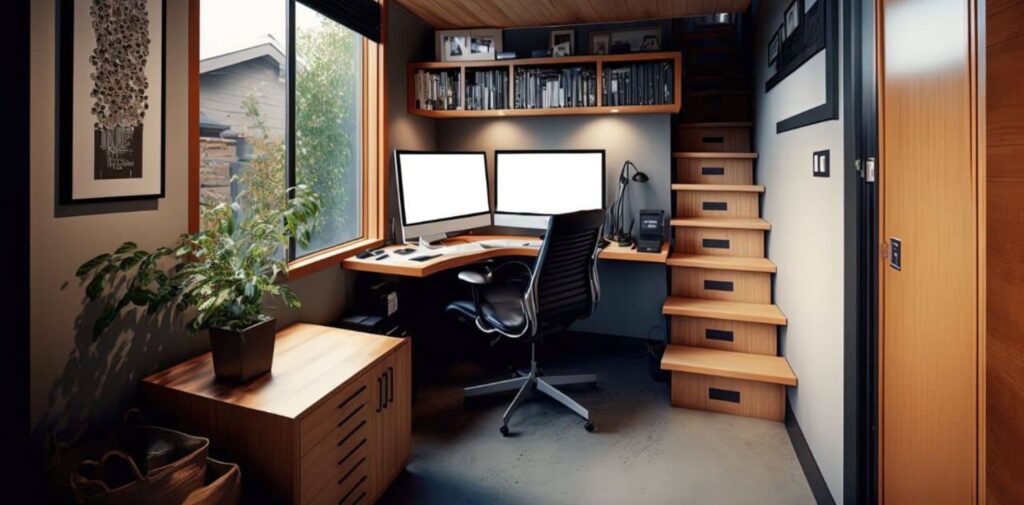
Invest in Comfortable Furniture
Your desk and chair are the two most important pieces of furniture in your office. You’ll be spending long hours sitting, so comfort and ergonomics should be your top priority.
- Desk: Choose a desk that provides enough space for your computer, books, papers, and any other items you regularly use. A simple, sturdy desk with drawers can help keep things organized and reduce clutter. If space is tight, consider a wall-mounted desk or a fold-out desk that can be tucked away when not in use.
- Chair: Invest in a comfortable, ergonomic chair that offers good support for your back. Look for one that’s adjustable, so you can set it at the perfect height for your desk. A comfortable chair will prevent strain and discomfort, allowing you to stay focused and productive.
- Standing desks: If sitting for long hours isn’t comfortable for you, consider a standing desk or an adjustable sit-stand desk. Alternating between sitting and standing throughout the day can improve circulation and reduce fatigue.
Keep It Organized
A cluttered space leads to a cluttered mind. Organization is crucial for a productive workspace. Here are a few tips to keep things neat:
- Declutter regularly: Only keep the items you need on your desk. Store away things that aren’t immediately necessary. If you have paperwork, consider using folders or file cabinets to keep things organized and out of sight.
- Storage solutions: Invest in shelves, drawers, or filing cabinets to store office supplies, documents, and equipment. If space is limited, look for multi-functional furniture that combines storage and work surfaces, such as desks with built-in drawers.
- Cable management: A tangle of cords can create a mess. Use cable organizers, clips, or even velcro straps to keep wires tidy and out of sight. Consider using wireless devices whenever possible to reduce cable clutter.
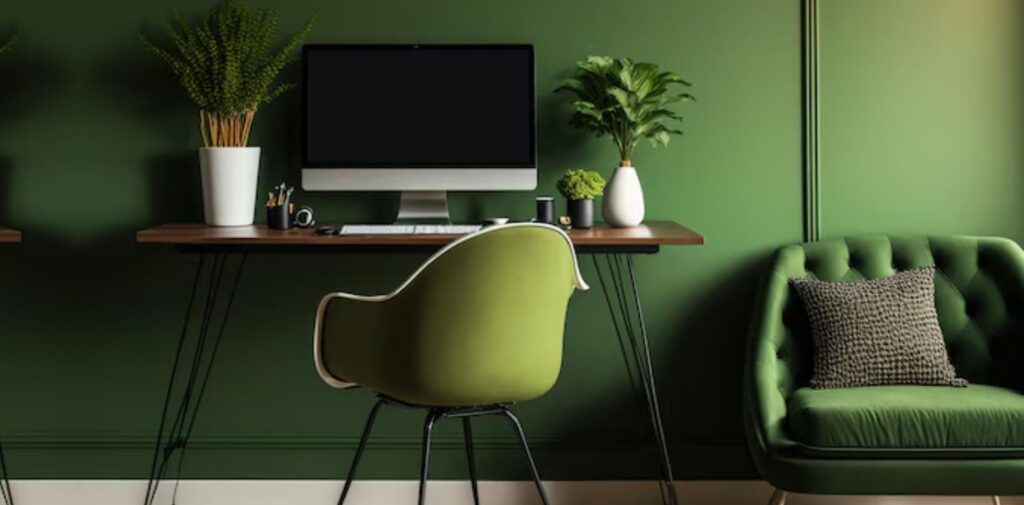
Personalize the Space
Your home office should be a place where you feel comfortable and motivated. Adding personal touches can make your workspace more inviting and inspiring.
- Decor: Choose a colour scheme that makes you feel calm and focused. Soft tones like blues, greens, or neutrals are ideal for creating a soothing environment. If you prefer a more energetic atmosphere, try adding pops of colour through accessories like pillows, artwork, or plants.
- Art and plants: Adding artwork or framed prints to the walls can give your office a personal touch. Indoor plants are also a great addition—plants not only brighten up the space, but they also purify the air, which can improve your overall well-being.
- Personal items: Place a few meaningful items on your desk or shelves, such as family photos, inspirational quotes, or a favourite mug. These personal touches can help create a space that feels uniquely yours, making it more enjoyable to work in.
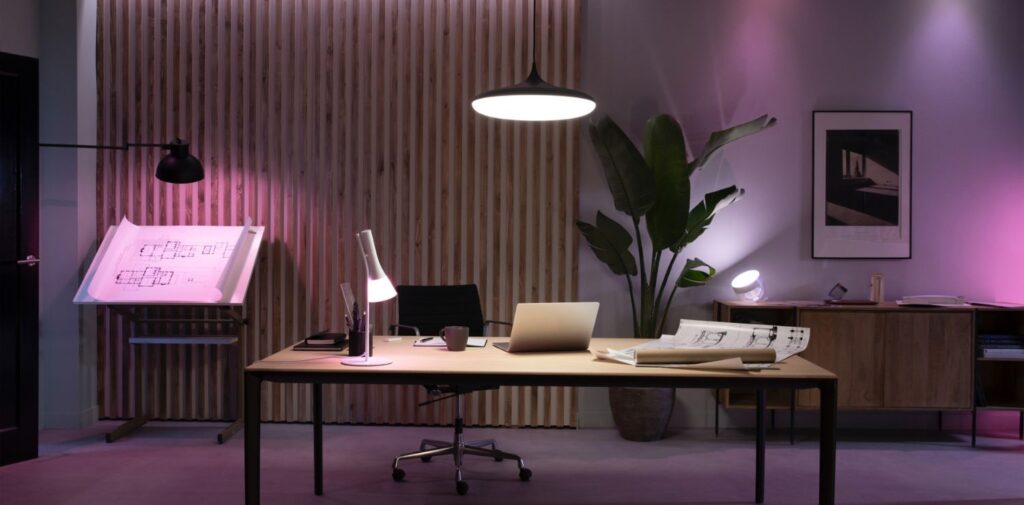
Set Up Proper Lighting
Good lighting is essential for creating a productive home office. Poor lighting can lead to eye strain, headaches, and fatigue. Here’s how to set up the right lighting:
- Natural light: As mentioned earlier, try to position your desk near a window to take advantage of natural light. Sunlight has been shown to improve mood and productivity.
- Task lighting: In addition to natural light, make sure you have a task lamp for focused work. A desk lamp with adjustable brightness can help you see your workspace clearly, especially during the evening hours.
- Ambient lighting: Ambient light provides overall room illumination. If your office lacks natural light, add a ceiling light, floor lamps, or soft LED lights to brighten up the room without causing glare on your screen.
Use Technology Wisely
In today’s digital world, technology is a key part of most home office setups. However, using technology wisely can help boost productivity and avoid distractions.
- Dual monitors: If your work involves multitasking or working with multiple applications, a dual-monitor setup can help you stay organized and reduce the need to switch between windows.
- Noise-cancelling headphones: If you live in a noisy household or neighbourhood, noise-cancelling headphones can help you focus better by blocking out background sounds.
- Time management tools: Use digital tools like project management apps (e.g., Trello, Asana) and calendar apps (e.g., Google Calendar) to keep track of your tasks, meetings, and deadlines. These tools help you stay organized and avoid missing important activities.
Keep a Comfortable Temperature
Temperature control is often overlooked, but it plays a significant role in your comfort and productivity. If your home office is too hot or too cold, it can be hard to focus.
- Fans or space heaters: Keep a fan or small space heater nearby if needed, so you can adjust the temperature to your preference. Be mindful of ventilation, especially if your office is in a room without windows.
- Thermostat settings: If your home has a central heating and cooling system, set the thermostat to a temperature that’s comfortable for working, generally around 68-72°F (20-22°C).
Create a Routine
The design of your home office isn’t just about the physical space; your routine and mindset matter too. Establishing a clear work routine helps set boundaries between work and personal life.
- Set working hours: Even if your schedule is flexible, it’s important to set specific working hours. This will help you stay focused and avoid overworking or procrastinating.
- Breaks and movement: Schedule regular breaks throughout the day to rest and recharge. Stretching, taking a walk, or simply stepping away from your desk for a few minutes can refresh your mind and body.
- Dedicated workspace: Treat your home office as a dedicated workspace. Avoid working from the couch or bed, as these places are associated with relaxation and leisure. Keeping your workspace separate from personal areas helps maintain focus.
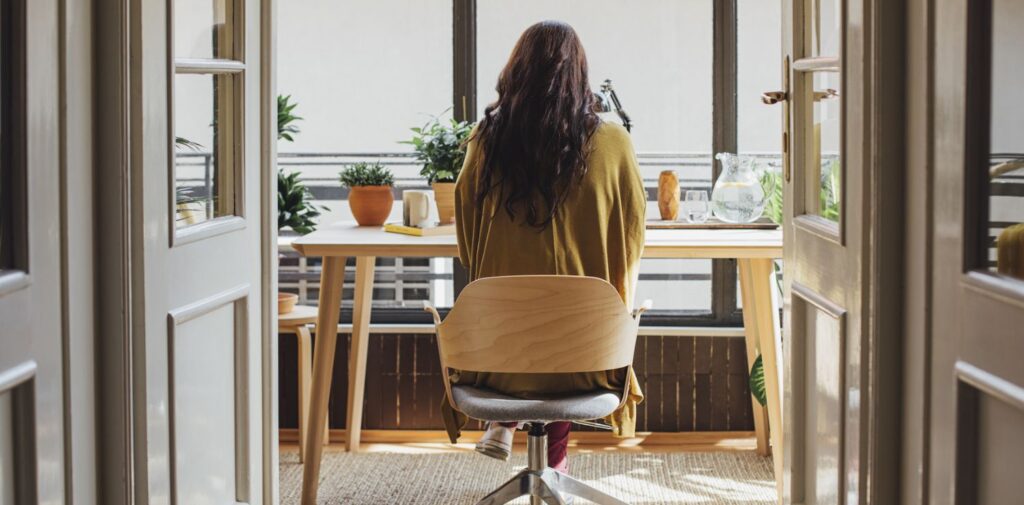
Stay Motivated with a Productive Environment
Creating a productive environment goes beyond furniture and design—your mindset and habits play a huge role too.
- Create a to-do list: Start each day with a list of tasks to help you stay on track. Breaking down large projects into smaller tasks can make them feel more manageable and give you a sense of accomplishment as you check things off.
- Stay organized: Keeping a clean and clutter-free space can make you feel more in control and less stressed. Invest time in tidying up your office daily.
- Reward yourself: After finishing a task or meeting a deadline, reward yourself with something small, like a coffee break or a quick walk outside. This positive reinforcement can keep you motivated throughout the day.
Conclusion: Create a Cozy and Functional Home Office
Create a Cozy and Functional Home Office doesn’t have to be complicated. By choosing the right location, investing in comfortable furniture, keeping things organized, and adding personal touches, you can transform your workspace into a place where you feel motivated, focused, and productive. Remember to incorporate proper lighting, technology, and a good routine, and you’ll find that your home office becomes an environment where you can thrive. With the right balance of comfort and function, you’ll enjoy both working from home and achieving your goals.

